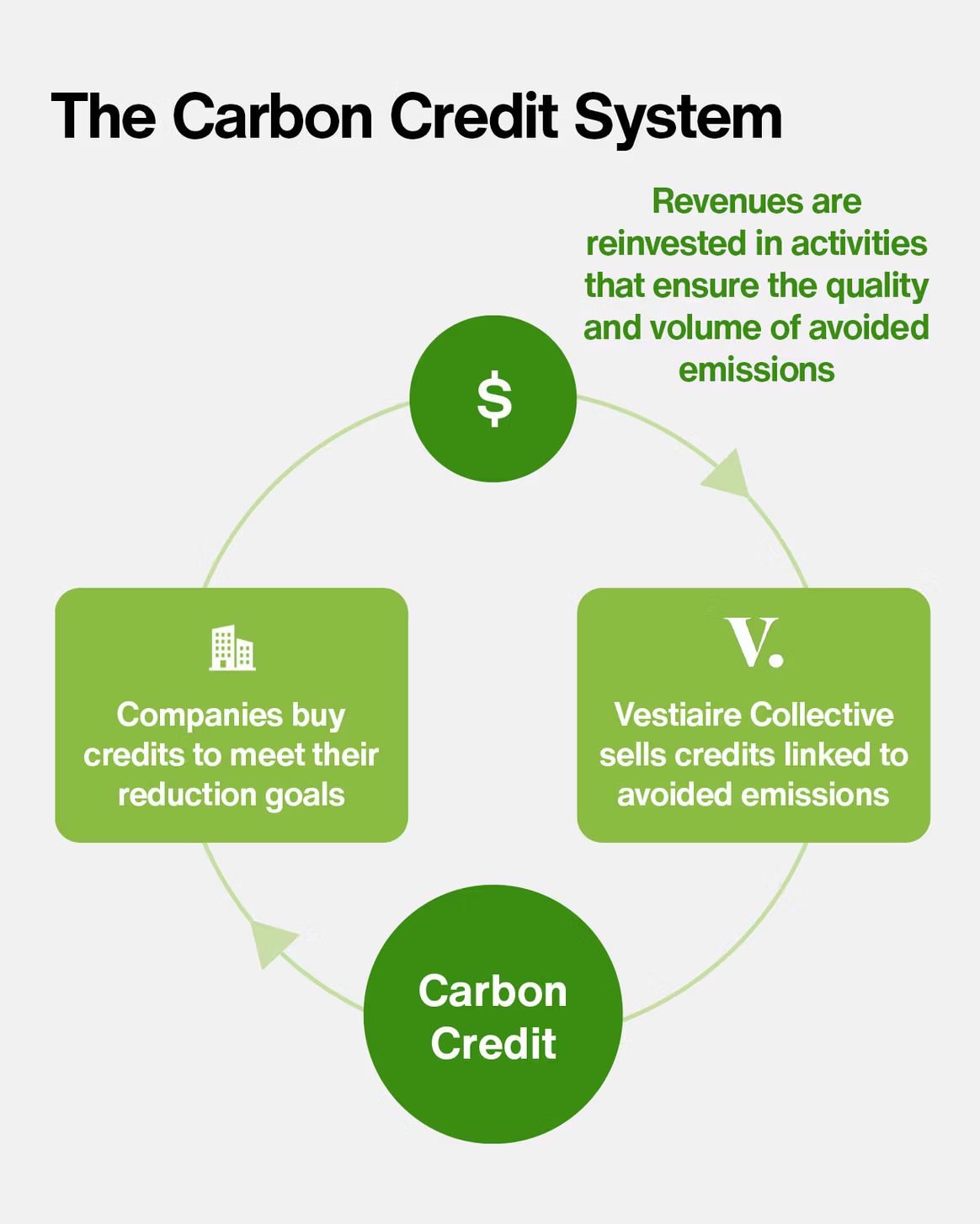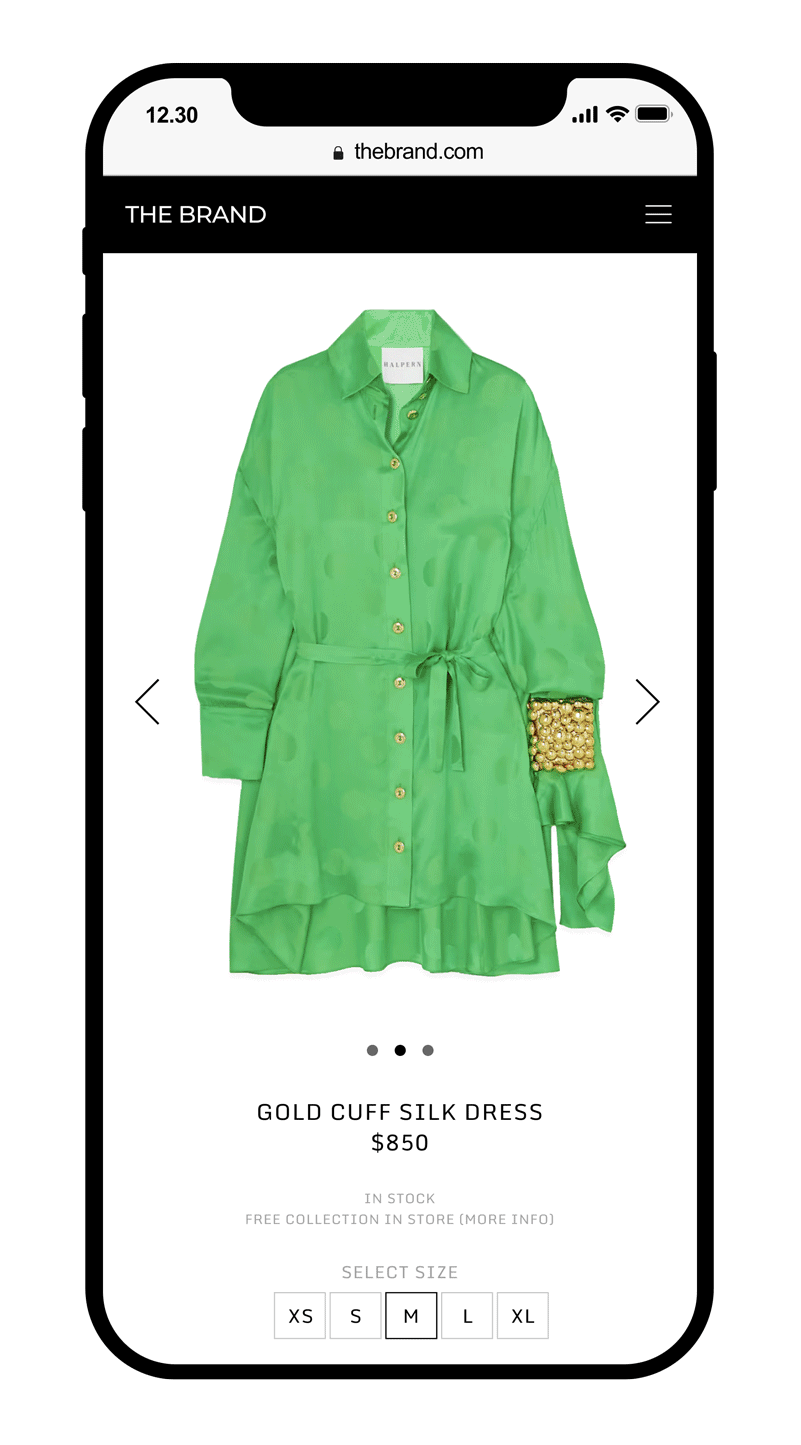- What the F*** is Fashion-Tech
- Posts
- Your Thrift Habit Just Became Climate Currency
Your Thrift Habit Just Became Climate Currency
Imagine this: you score a pre-loved Gucci bag, you’re feeling great about saving (girl math) >$2000 and the planet, then watch your purchase generate an actual carbon credit that someone else buys to offset their emissions. That's exactly what Vestiaire Collective just launched in October 2025, the first resale platform to sell certified carbon credits based on avoided emissions from second-hand shopping.
Welcome to the weirdest flex in circular fashion - monetising the CO₂ that didn't happen because you bought vintage. Let's unpack whether this is genius climate fintech or greenwashing in boss mode.

The Deal: Turning Old Clothes Into New Revenue
Here's how Vestiaire's scheme works. They calculated the emissions avoided when someone buys pre-owned on their platform instead of new, then sold those savings as 55,000 certified carbon credits at roughly €34 each ≈AU$56 (big cheque for Vestiaire
). Each credit represents one tonne of CO₂ that never entered the atmosphere because a second-hand purchase displaced new production.
Vestiaire reported that their users' 2024 second-hand purchases avoided over 63,000 tonnes of CO₂ emissions, which actually exceeds the company's own operational footprint. By this logic, more resale shopping equals climate credits equals revenue to scale circularity even further. It's a feedback loop, your vintage habit funds the platform improvements that get more people buying vintage.
But hold on… Before we declare victory for thrift stores everywhere, we need to talk about the tech scaffolding making this possible, and the very valid scepticism swirling around.
Fashion Tech's Invisible Hand
Turning a second-hand blouse into tradeable climate currency isn't magic. It's powered by three layers of tech:
Carbon analytics: To determine how many credits each piece should be. Life-cycle assessment tools (often AI-enhanced) crunch the numbers on how much CO₂ manufacturing a new garment emits versus reusing an existing one. These calculations run item-by-item, then aggregate into credits. Without sophisticated data modelling, you can't prove the avoided emissions are real.
Platform infrastructure: To determine the above ^, they needed a huge set of data to train the algorithm on. Vestiaire's entire marketplace, databases logging item type, material, shipping distance, user purchase history, is what enables calculating carbon savings at scale. The e-commerce backbone becomes the carbon accounting backbone.
Carbon market tech: To verify and list these credits. Once quantified, those savings need to interface with voluntary carbon market registries where credits get unique serial numbers and can be traded (ie. platforms where brands can buy back credits). Vestiaire's credits were verified by French partner Inuk and certified by AmSpec to ensure legitimacy. The entire supply chain, from your op-shop haul to a corporate offset purchase, runs on digital rails.
This is where fashion-tech gets quietly brilliant, the same infrastructure that recommends your next vintage Prada also tracks its climate impact and potentially mints financial value from it. It's circularity meeting fintech at the intersection of your wardrobe.

The Greenwashing Red Flags
Now for the uncomfortable bit. Sustainability experts are side-eyeing this hard, and they've got points:
Accounting gymnastics: Vestiaire's methodology treats a resold garment's original production emissions as "zero" for the second owner, counting only the new emissions avoided. Philosophically debatable? Absolutely. Critics argue this simplifies a messier reality, someone might have bought second-hand elsewhere anyway, so how much credit does one platform truly deserve?
Missing pieces: The calculation conveniently ignores Vestiaire's own operational emissions, packaging, shipping the pre-owned item, running warehouses and servers. Those aren't trivial. The credits only capture "avoided production," but a complete picture would net out the platform's carbon cost.
Profit vs planet: Carbon credit revenue is funding Vestiaire's marketing and catalogue improvements, essentially normal business growth. Some argue offset funds should go to explicit climate projects like reforestation, not private company operations. Vestiaire counters that scaling resale is climate action. The philosophical line is blurry.
Most importantly: The whole concept of carbon credits (allowing companies to buy their way out of climate action) is deeply problematic. But that’s far too out of scope to cover here.
The ANZ Opportunity: Enter AirRobe
Australia and New Zealand are already thinking about this. In mid-2024, Australian regulators floated a proposal to award carbon credits or similar incentives to consumers for buying second-hand clothes, potentially the first scheme of its kind.
Which brings us to the local hero positioned to capitalise: AirRobe. This Aussie fashion-tech platform has embedded circular wardrobes into major retailers like THE ICONIC, letting customers seamlessly resell or rent their clothes after purchase. AirRobe already quantifies impact, they estimate selling or wearing one pre-owned item offsets about 19 kg of CO₂, saves 95 litres of water, and prevents 2 kg of textile waste.
If Australia formalises carbon credits for resale, AirRobe's infrastructure, tracking each item's resale journey and environmental benefit, puts them in pole position. Imagine major Aussie retailers promoting "Buy pre-owned via AirRobe, earn carbon credits toward your net-zero goals." It's not far-fetched. With partners including P.E. Nation and Viktoria & Woods, AirRobe could help brands turn circularity into both a sustainability win and a revenue stream.
Between platforms like AirRobe and recycling innovators like Samsara Eco (using enzyme tech to infinitely recycle polyester), ANZ is quietly becoming a hotbed where more and more old garment are
either resold, repurposed, or molecularly reborn, with massive carbon savings at each step.

Why It Matters Now
Vestiaire's carbon credit experiment is part savvy business, part sustainability statement, and 100% enabled by fashion-tech infrastructure. Whether it becomes standard practice or a curious footnote depends on one thing: can the industry prove these credits represent real, additional climate impact without devolving into accounting sleight-of-hand?
The upside is that circular fashion gets a financial value beyond "good vibes," potentially unlocking investment and scaling resale faster. The risk could be that greenwashing accusations that undermine trust in both carbon markets and sustainable fashion initiatives.
For ANZ, the stakes are high. If our region gets the verification and transparency right, leveraging local platforms like AirRobe with rigorous data, we could model how thrift culture becomes climate action. But if we fumble it, we risk turning environmental progress into a punchline.
Pop-Feature:

AirRobe
What they do:
AirRobe partners with major Australian retailers to integrate circular wardrobes directly into the shopping experience. Buy from THE ICONIC or Country Road, add items to your AirRobe account with one click, then seamlessly resell or rent them later. It's thrifting without the op-shop hunting, just built-in circularity.
Why it matters:
AirRobe has already diverted thousands of garments from landfill whilst quantifying the climate benefit per item (19 kg CO₂ saved per resale). If Australia moves forward with carbon credits for second-hand fashion, AirRobe's tech stack, tracking each garment's lifecycle and environmental impact, positions them to lead the charge. They've essentially pre-built the infrastructure for monetising avoided emissions down under.
Impact scorecard: 8.5/10
Strong partnerships with major retailers, proven impact metrics, and clear alignment with emerging carbon credit frameworks. Docked points only because they're not yet issuing credits themselves, but give it six months and they might be the Vestiaire of the Southern Hemisphere.
Here's the provocative Q: Should your second-hand shopping spree earn you carbon credits, or are we just dressing up consumerism in green lipstick? And did you even know this was a thing?
Forward this to a friend that shops Vintage. See you in two weeks time & take care of yourself.
Grace & Rak